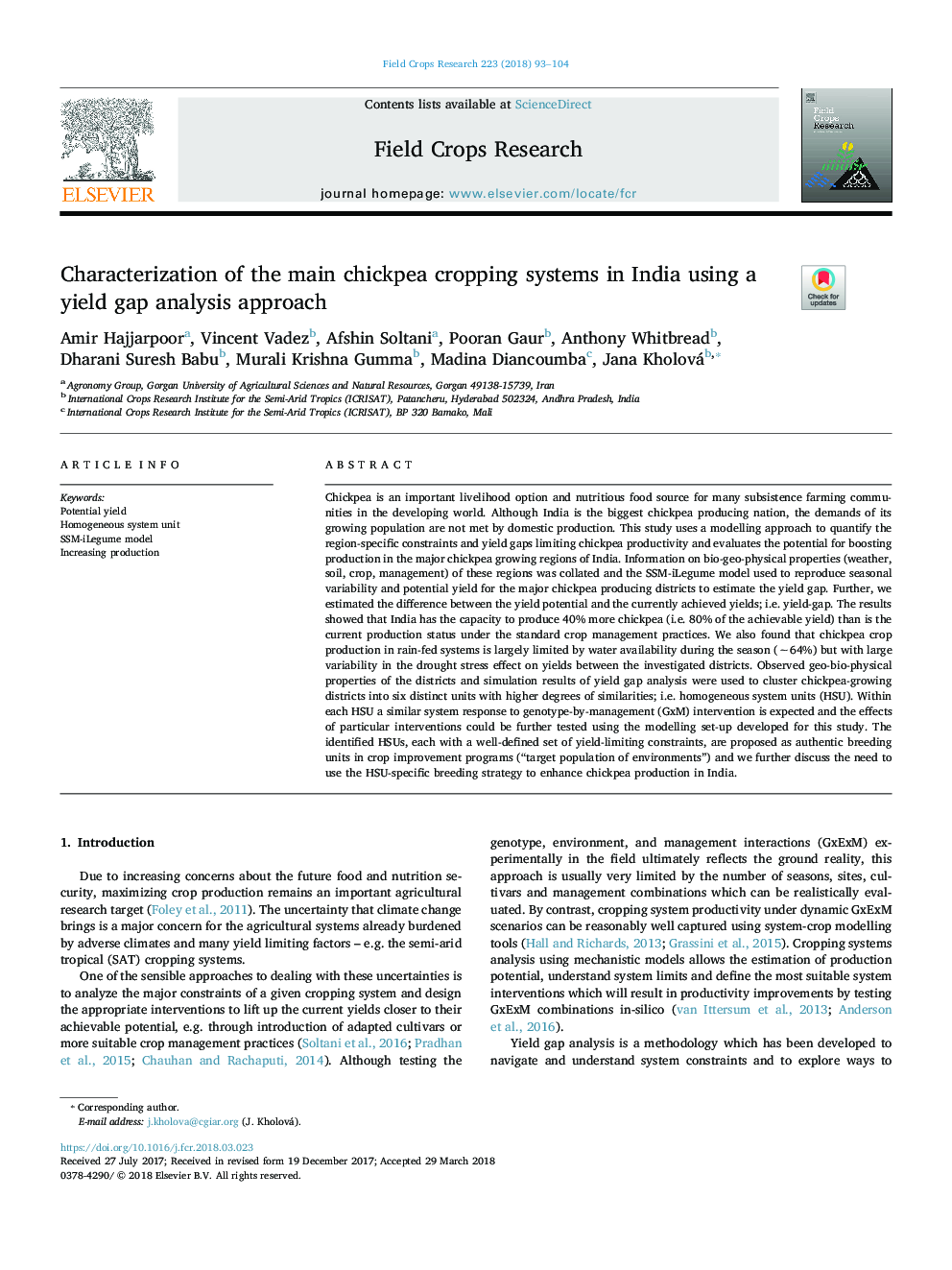| کد مقاله | کد نشریه | سال انتشار | مقاله انگلیسی | نسخه تمام متن |
|---|---|---|---|---|
| 8879157 | 1624640 | 2018 | 12 صفحه PDF | دانلود رایگان |
عنوان انگلیسی مقاله ISI
Characterization of the main chickpea cropping systems in India using a yield gap analysis approach
ترجمه فارسی عنوان
مشخصه اصلی سیستم های پرورش نخود در هند با استفاده از روش تجزیه و تحلیل شکاف
دانلود مقاله + سفارش ترجمه
دانلود مقاله ISI انگلیسی
رایگان برای ایرانیان
کلمات کلیدی
موضوعات مرتبط
علوم زیستی و بیوفناوری
علوم کشاورزی و بیولوژیک
علوم زراعت و اصلاح نباتات
چکیده انگلیسی
Chickpea is an important livelihood option and nutritious food source for many subsistence farming communities in the developing world. Although India is the biggest chickpea producing nation, the demands of its growing population are not met by domestic production. This study uses a modelling approach to quantify the region-specific constraints and yield gaps limiting chickpea productivity and evaluates the potential for boosting production in the major chickpea growing regions of India. Information on bio-geo-physical properties (weather, soil, crop, management) of these regions was collated and the SSM-iLegume model used to reproduce seasonal variability and potential yield for the major chickpea producing districts to estimate the yield gap. Further, we estimated the difference between the yield potential and the currently achieved yields; i.e. yield-gap. The results showed that India has the capacity to produce 40% more chickpea (i.e. 80% of the achievable yield) than is the current production status under the standard crop management practices. We also found that chickpea crop production in rain-fed systems is largely limited by water availability during the season (â¼64%) but with large variability in the drought stress effect on yields between the investigated districts. Observed geo-bio-physical properties of the districts and simulation results of yield gap analysis were used to cluster chickpea-growing districts into six distinct units with higher degrees of similarities; i.e. homogeneous system units (HSU). Within each HSU a similar system response to genotype-by-management (GxM) intervention is expected and the effects of particular interventions could be further tested using the modelling set-up developed for this study. The identified HSUs, each with a well-defined set of yield-limiting constraints, are proposed as authentic breeding units in crop improvement programs (“target population of environments”) and we further discuss the need to use the HSU-specific breeding strategy to enhance chickpea production in India.
ناشر
Database: Elsevier - ScienceDirect (ساینس دایرکت)
Journal: Field Crops Research - Volume 223, 15 June 2018, Pages 93-104
Journal: Field Crops Research - Volume 223, 15 June 2018, Pages 93-104
نویسندگان
Amir Hajjarpoor, Vincent Vadez, Afshin Soltani, Pooran Gaur, Anthony Whitbread, Dharani Suresh Babu, Murali Krishna Gumma, Madina Diancoumba, Jana Kholová,
